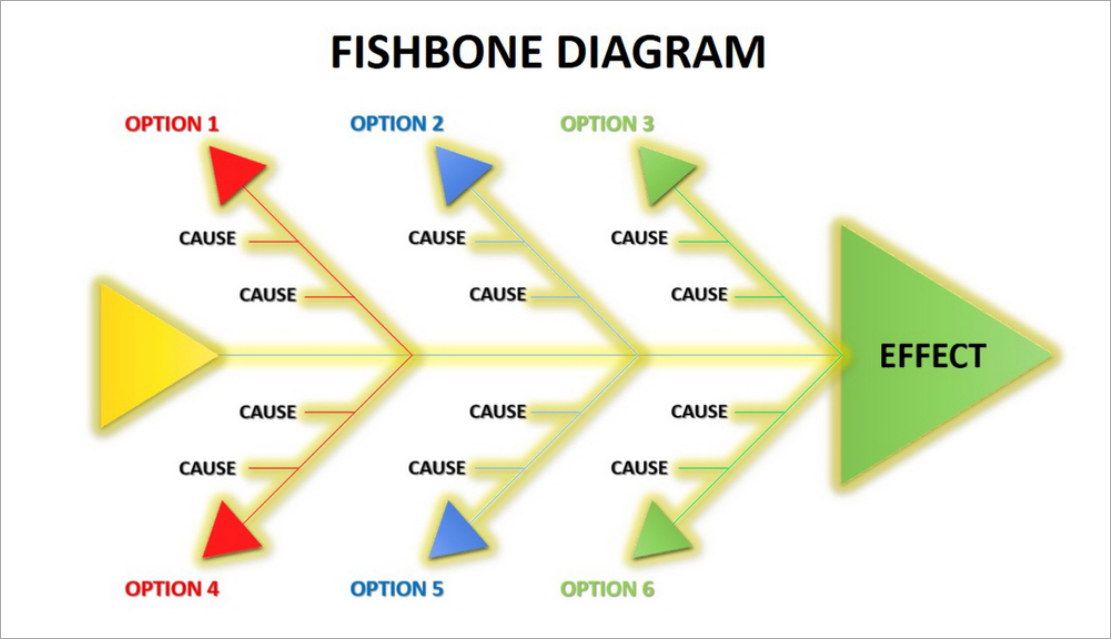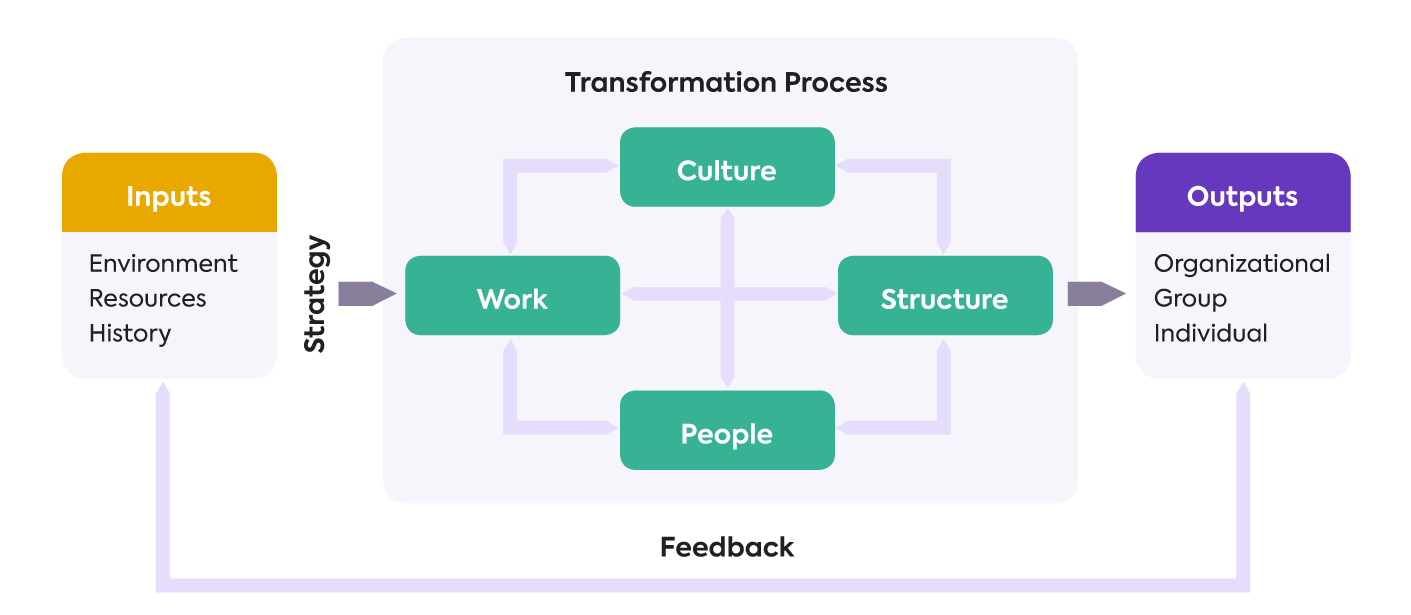
What exactly is a gap analysis?
A gap analysis is a method for discovering gaps between a company's present performance and its desired performance. This analysis, which can be quantitative or qualitative, is frequently conducted prior to launching an endeavor to "close" the gaps.
Understanding research gap analysis
The gap analysis methodology is known by several names, including need assessment, need analysis, and need-gap analysis. Whatever you call it, the essential premise stays the same: identify and then solve the challenges that are holding your company back.
Two questions are addressed by gap analysis:
Where are we in terms of performance?
Where do we want to be in the future?
While the process begins with an introspective examination of present vs potential performance, it does not end there. To define your ideal state, gap research should involve outside sources such as industry benchmarks and your market's competitive landscape.
This type of 360-degree examination can be done at both the strategic and operational levels. You can examine your general business objectives or go down into specific processes or departments.
Following the first round of analysis—performance vs potential—you may discover that your outcomes exceed your expectations. The same can be said if your entire company is currently undergoing rapid expansion.
In these circumstances, the goal shifts from identifying difficulties to discovering success factors that can be replicated, applied to other aspects of your business, and eventually grown.
The technique of completing the analysis is the same whether you're reviewing difficulties or triumphs, human resources or logistical activities.
Different types of research gaps
Gaps in research can take several forms, including:
- Knowledge gaps are missing or incomplete pieces of information in the existing body of knowledge. These gaps might be filled by performing new studies or synthesizing existing findings.
- Methodological gaps occur when existing research methodologies are insufficient or inappropriate for a certain situation. These deficiencies can be filled by developing new research methodologies or adapting existing ones.
- When study findings are not transferred into practice or policy, there are practical gaps. Engaging stakeholders and converting findings into meaningful recommendations might help you close these gaps.
Performing a gap analysis step by step
The temptation with the gap analysis approach is to go big at first. Unfortunately, when you try to handle too much at once—to improve everything all at once—resources become stretched thin.
Prioritize the regions where there is either (1) the most beneficial impact or (2) the greatest discomfort.
This could be due to a variety of circumstances, including:
- Sales figures
- Customer fulfillment
- Rates of retention
- Shipping timelines
- Returns on marketing
- Manufacturing expenses
- International growth
Once you've identified an area large enough to create an impression yet tiny enough to wrap your head and hands around.
1. Determine your states
Once you've decided on your areas of focus, the first step is to determine where you are now (performance) and where you want to go in the future (potential).
Let's use the following as an example:
- Your primary focus should be on multichannel sales.
- Specific channels as outlets
- Current monthly sales as performance
- Potential industry averages
Your current level of performance
Every gap analysis begins with self-reflection. Where are you right now in relation to the key performance indicator (KPI) that you're analyzing? The objective is to describe all of the characteristics—in this case, channels—that influence success or failure.
The qualities (and, hence, the analysis) can be quantitative or qualitative. When detecting potential flaws, it is critical to be detailed and factual. Depending on the gap being investigated, the necessary data can be gathered from a variety of sources, including:
- Averages in the industry
- Historical comparisons
- Internal paperwork
- Interviews with customers
Your potential state
The future state depicts the ideal condition in which you want your firm to be. For quantitative research, such tracking sales metrics, you would incorporate either data from the industry or expected sales (i.e., goals).
When preparing for the future, you want to be highly specific by establishing targets within a specified time period (e.g., raise sales by 40% overall by the end of Q3).
Your gaps
Defined quantitatively, gaps are straightforward. What are the numerical differences between where you are and where you want to be?
Qualitatively, this will take a bit more contemplation and collaboration.
2. Describe the gaps
Having discovered the gaps, the following step is to define each gap to better understand the reasons behind their occurrence.
If you’re now ahead of your targets, then it’s a perfect moment to assess what exactly made the outcomes possible and if there are methods to employ the same ideas in other areas of your firm.
Even a well-performing system may always be optimized, thus going through this stage is vital.
Gap. This one is easy. Simply carry over the gaps you discovered in the previous stage, starting with the most underperforming regions first. In our example, we’ve picked email, because that’s where the largest gap between performance and potential lies.
Description. The objective of a gap description is to capture all the relevant variables responsible for the gap. Therefore, the description has to be consistent with those states. These might either be quantitative or qualitative. However, more often than not, to address the reasons behind the gaps, you’ll employ qualitative descriptions.
Why? The tough question here is not how far your actual performance went below target, but why the gap exists. To be of any help, this list has to be specific, impartial, and relevant to the situation at hand. It helps to brainstorm plausible explanations of low performance, and then filter those down using tools like the “five whys” analysis.
3. Fill the spaces
The third and final phase in your gap analysis report is to brainstorm all possible remedies and reasons for the gaps. These remedies must be specific and have an immediate impact on the variables identified in the preceding phase.
To accomplish so, let us return to our previous multichannel focus:
By compiling a comprehensive list of solutions to the gap-description summary, you allow yourself to think broadly while positioning yourself for practical implementation.
When considering potential solutions, take in mind that there may be implementation expenses associated. These costs might involve both time and money, as well as human resources.
Gap analysis examples
Ecommerce
The "five whys" method is an iterative strategy for investigating the cause-and-effect links underlying a specific situation. Its major purpose is to determine the fundamental cause of an issue by asking "Why?" repeatedly, with each question establishing the basis for the next.
Although this approach is known as the "Five Whys," it does not require you to ask "Why?" five times. The goal is to repeat the process until the root cause(s) are identified. It may take fewer or more than five whys to get to the root of the problem.
Rather than going the multichannel ecommerce way, consider a circumstance in which clients are dissatisfied because they are receiving products that do not fulfill their expectations.
1. Why are customers receiving defective products?
Because manufacturing used materials that differed from what the client expected based on advertising.
2. Why did production use different materials than those advertised?
Because the supply-chain manager expedites operations on the shop floor by directly contacting the head of manufacturing to start production. When the specifications were being transmitted, an error occurred.
3. Why does the supply-chain management call the manufacturing head immediately to begin work rather than utilizing written communication?
Because the "start work" form requires direct clearance from the supply-chain management before work can begin.
4. Why does the form require supply-chain management approval?
Because the manufacturer does not provide digital integration with your present ecommerce platform.
In this scenario, only four whys were required to determine that the gap was caused by a non-value-added signature created by a lack of integration.
An examination of the industry
Gap analysis in industry-focused research frequently include examining market trends, consumer wants, and rival offerings.
Understanding the industry's unmet demands and possibilities allows researchers to develop unique solutions and strategies to bridge these gaps and gain a competitive advantage.
Profitability analysis
Profit gap research can help ecommerce businesses find areas where they are underperforming financially.
A profit objective is set based on past performance or industry benchmarks. Profits are then compared to targets, and areas for improvement in revenue growth or cost cutting are highlighted. This study is used by ecommerce firms to make strategic decisions and increase profitability.
Several tools and techniques can be employed to facilitate gap analysis in research, such as:
SWOT analysis
Tools and methodologies for gap analysis
Several methods and strategies, such as: can be used to facilitate gap analysis in research.
The SWOT analysis

SWOT analysis is a strategic planning tool that helps organizations determine their strengths, weaknesses, opportunities, and threats.
It assists decision-makers in better planning and strategizing by categorizing internal and external aspects. The tool is used to create goals, analyze markets, and evaluate competitors.
Fish bone diagram

A fish bone diagram, also known as an Ishikawa diagram or cause-and-effect diagram, is a graphical technique used to discover and analyze fundamental causes.
It enables teams to methodically investigate relevant aspects by categorizing potential causes and visualizing them as a "fish bone" structure. Many businesses utilize this type of diagram for quality control, process improvement, and problem solving.
McKinsey 7S
.jpg)
The McKinsey 7S framework assesses the alignment of an organization's strategy, structure, systems, shared values, skills, and style.
These seven components work together to discover areas for improvement or change. This paradigm is utilized for organizational changes, mergers and acquisitions, as well as detecting and correcting performance issues.
Nadler-Tushman model

The Nadler-Tushman model, often known as the Congruence model, assesses the fit between an organization's task, people, structure, and culture.
The tool examines the alignment of the four components to discover gaps, misalignments, and places for improvement. The model is used to assess organizational performance, to lead change activities, and to create new structures and processes.
The advantages of gap analysis in research
Gap analysis in research has various advantages, including:
- Improved research relevance: By focusing on filling gaps, you may ensure that your work is more relevant and beneficial to your organization.
- Improved research design: Gap analysis aids in the refinement of research questions and objectives, resulting in more targeted and successful study designs.
- Increased research impact:Addressing performance gaps can lead to more substantial outcomes and a larger possibility for real-world impact.
- Informed decision-making: Using gap analysis, you may make more informed decisions about research priorities and funding allocation.
Limitations and difficulties
Despite its advantages, gap analysis in research has certain drawbacks and limitations:
- Gaps identified by literature reviews may be influenced by the availability and quality of current literature, which might be incomplete or biased at times.
- Because new research is constantly being undertaken, gaps in knowledge can soon become outdated or useless.
- Due to time, budget, or expertise restrictions, it may not be possible to address all identified gaps.
Best methods for doing a successful gap analysis
Consider the following best practices for conducting effective gap analysis in research:
- Maintain a methodical approach: To ensure the reliability and validity of your findings, use an organized and transparent method for assessing literature and detecting gaps.
- Keep up with research developments: Update your knowledge of the research landscape on a regular basis to account for new discoveries and emerging trends.
- Work with stakeholders to achieve the following goals: Engage with important stakeholders such as industry experts, policymakers, and practitioners to learn about practical gaps and real-world needs.
- Maintain a balance of ambition and feasibility: While it is critical to strive for relevant research, it is also critical to ensure that your research aims are achievable within your resource limits.
A gap analysis can help you improve your strategic planning.
Finally, gap analysis produces a thorough study of:
- The shortcomings in your current performance
- The causes of those difficulties
- The costs and benefits of various solutions
Instead of using sheer force—or "shooting from the hip"—you'll have hard data to build your new products and efforts on, as well as a plan to guide you.
FAQ about Gap Analysis
What exactly is a gap analysis example?
A gap analysis example is a comparison of an organization's current status to its desired future state. This is frequently done to identify areas that require improvement or where greater resources are required. An organization, for example, may do a gap analysis to discover and assess any disparities between its present customer service strategies, rules, and processes and what is required to achieve consumer expectations. The firm can then develop detailed action plans for improving customer service and ensuring that customer service objectives are accomplished.
What are the three most important elements of a gap analysis?
- Identifying and comprehending the current state entails comprehending your current skills, procedures, and performance to find areas for development.
- Setting targets and goals for progress allows you to measure the difference between your current and ideal state.
- Implementing a plan of action: After identifying and comprehending your existing situation, as well as setting objectives and goals, you must devise a plan of action to bridge the gap between the two. This strategy should include strategies and remedies to any identified gaps.
What steps are involved in a gap analysis?
- Determine the current state: Examine existing processes, systems, products, services, and strategies.
- Determine the required state: Define the goals and desired outcomes.
- Determine the gap: Compare the existing condition to the planned state and discover any differences.
- Examine the disparity: Determine the core causes of the gaps and assess their impact on the organization.
- Make a plan: Create an action plan to close the gap and accomplish the target result.
- Put the plan into action: Put the strategy into action and keep track of how things are going.
- Analyze the outcomes: Analyze the gap analysis results and adapt the plan as appropriate.
Is a SWOT analysis the same as a gap analysis?
No, a SWOT analysis and a gap analysis are not the same thing. A SWOT analysis is used to determine a situation's strengths, weaknesses, opportunities, and threats. A gap analysis compares an organization's present performance to its desired performance to discover any gaps.
Let's Get to Work.
Have an unsolvable problem or audacious idea?
